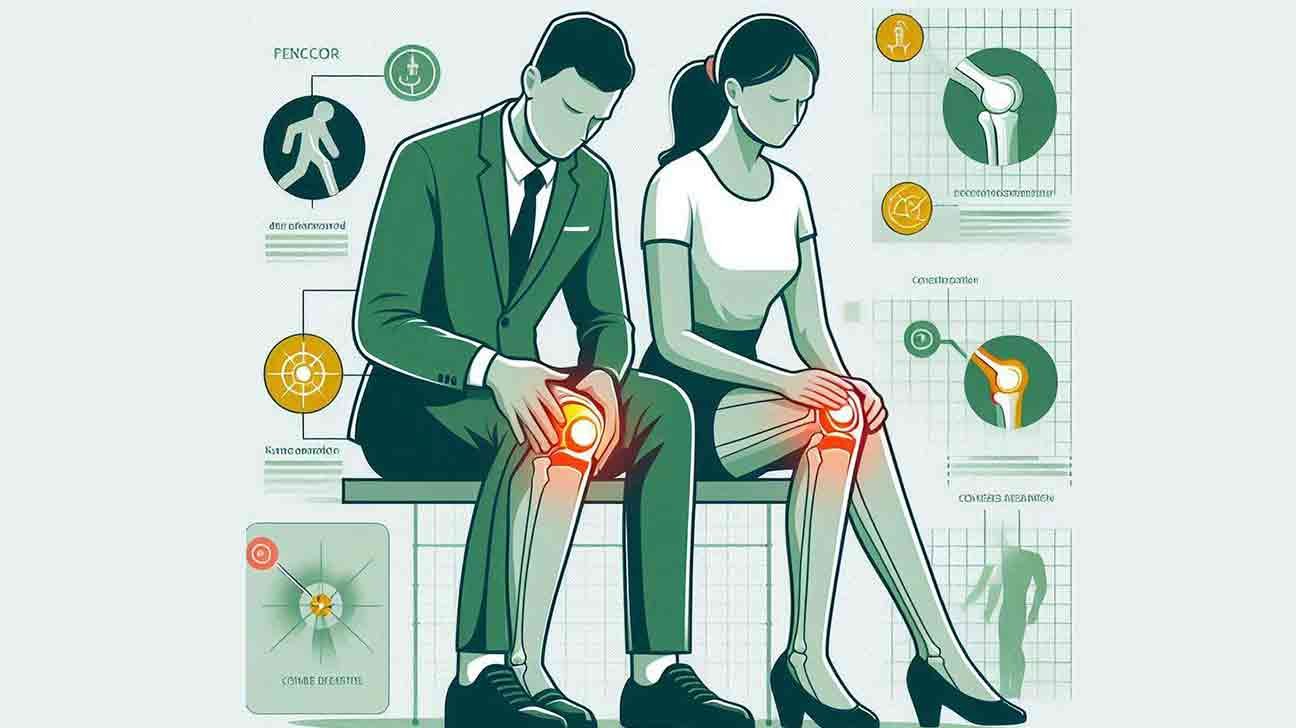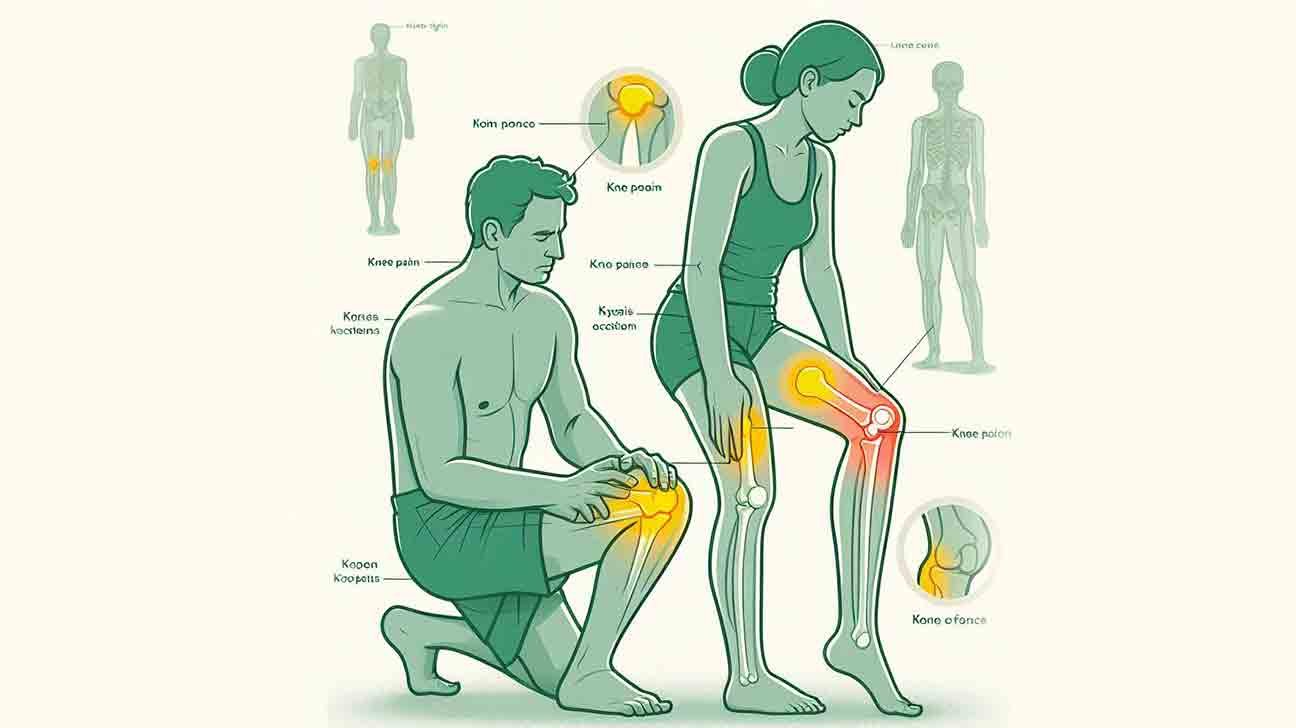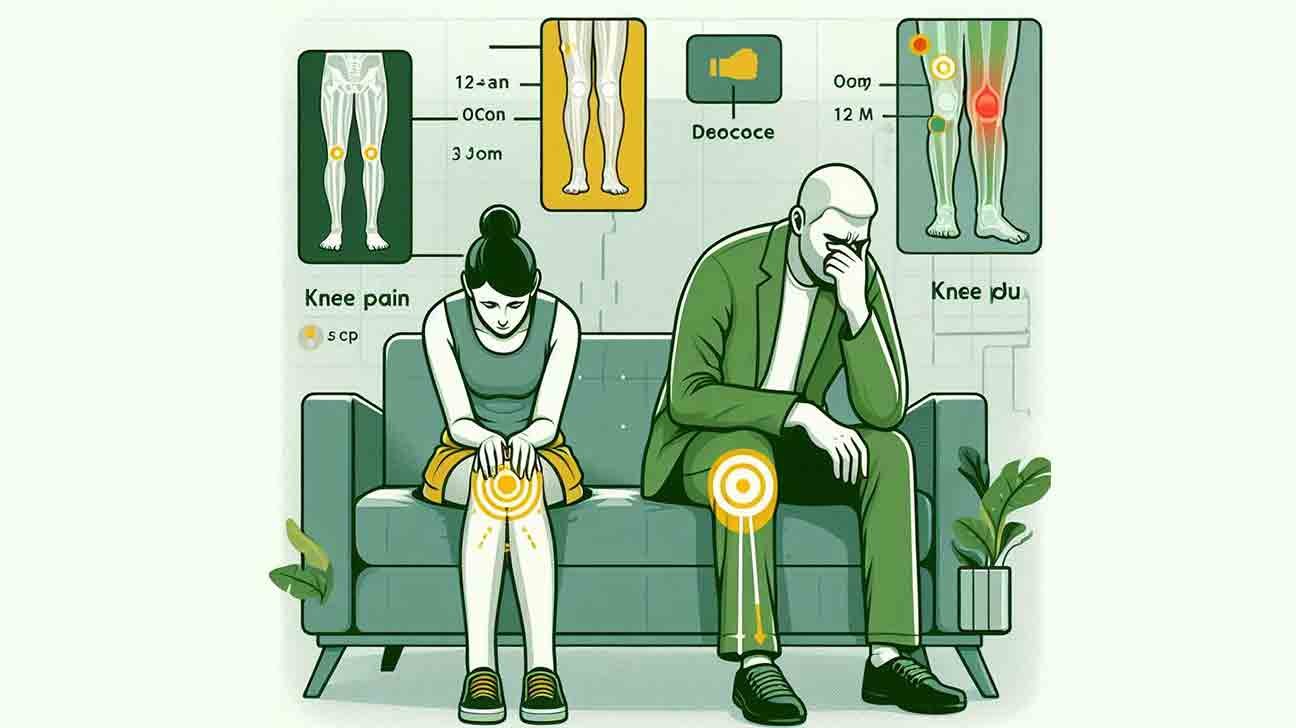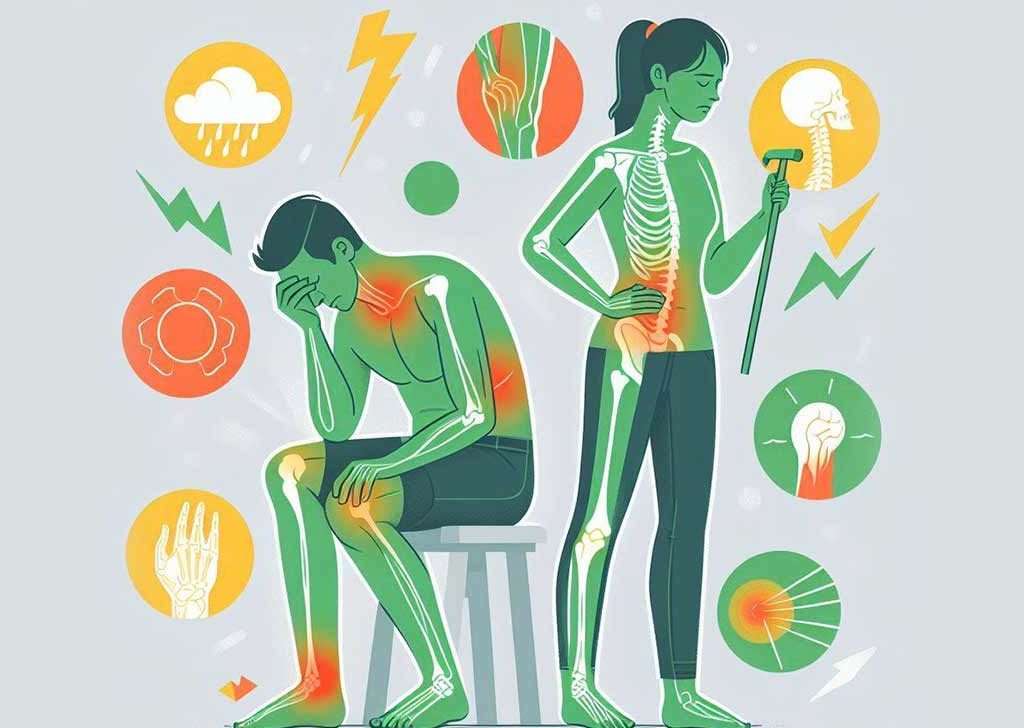
The knee pain location chart outlines specific areas of the knee that may be affected. It is a useful tool for identifying the source of knee pain.
Knee pain can be a debilitating issue that affects people of all ages and lifestyles. Understanding the potential causes of knee pain and the areas of the knee that may be affected is crucial for effective diagnosis and treatment. The knee pain location chart provides valuable insight into the different regions of the knee and how they may correspond to specific injuries or conditions.
By familiarizing yourself with this chart, you can better communicate with healthcare professionals and take appropriate steps to address and manage knee pain effectively.
Knee Pain
Knee pain can be a common issue that affects individuals in various locations of the knee. Understanding the knee pain location chart can help identify the specific area of discomfort, allowing for targeted treatment and relief. Find out more about the different areas of the knee affected by pain and how to alleviate it.
Knee pain can be a common issue that affects people of all ages and lifestyles. Whether you are an athlete or someone who spends long hours sitting at a desk, knee pain can be a result of numerous factors. Understanding the location of knee pain can help diagnose the underlying condition and the appropriate treatment. This is where a knee pain location chart comes in handy. In this blog post, we will delve into the causes of knee pain and the importance of understanding pain locations.
Causes Of Knee Pain
Knee pain can be caused by various factors, including:
- Injuries such as fractures, dislocation, sprains or torn ligaments
- Arthritis, which can cause inflammation and damage to the joints
- Tendinitis, which is inflammation of the tendons that connect the muscles to the bones
- Bursitis, which is inflammation of the small sacs of fluid that cushion and lubricate the knee joint
- Meniscus tears, which can occur due to sudden twisting or turning of the knee
- Overuse or repetitive strain injuries
It is important to note that knee pain can also result from underlying medical conditions such as gout, lupus, or infections.
Importance Of Understanding Pain Locations
The location of knee pain can provide valuable insights into the underlying cause of the discomfort. Pain can be felt in different parts of the knee, including the front, back, sides, and even inside the joint. By understanding where the pain is located, healthcare professionals can diagnose the root cause of the pain, which can help determine the appropriate treatment. For example, pain on the outside of the knee is often associated with iliotibial band syndrome, while pain in the front of the knee is commonly associated with patellofemoral pain syndrome. Therefore, understanding pain locations is crucial in developing a targeted treatment plan that can alleviate the discomfort and prevent further damage. In conclusion, knee pain can be a debilitating condition that affects many people. Understanding the causes of knee pain and the importance of identifying pain locations can help in the diagnosis and treatment of the underlying condition. A knee pain location chart is a useful tool that can help identify the location of pain and improve communication between patients and healthcare professionals.
Anatomy Of The Knee
The knee is a complex joint that plays a vital role in movement and stability. Understanding the anatomy of the knee can help in identifying the causes and locations of knee pain. The knee joint is comprised of various structures that work together to support the body and facilitate movement.
Key Structures Of The Knee Joint
The knee joint consists of several key structures that contribute to its function:
- Bones: The knee joint is formed by the femur (thighbone), tibia (shinbone), and patella (kneecap). These bones provide the framework and support for the knee.
- Ligaments: Ligaments are strong bands of tissue that connect bones to each other. In the knee, there are four main ligaments: the anterior cruciate ligament (ACL), posterior cruciate ligament (PCL), medial collateral ligament (MCL), and lateral collateral ligament (LCL). These ligaments help stabilize the knee and prevent excessive movement.
- Menisci: The knee contains two C-shaped pieces of cartilage called menisci. These act as shock absorbers and provide cushioning between the femur and tibia.
- Tendons: Tendons are thick cords of connective tissue that attach muscles to bones. In the knee, the patellar tendon connects the patella to the tibia, while the quadriceps tendon connects the quadriceps muscles to the patella.
- Bursae: Bursae are small fluid-filled sacs that reduce friction between tissues in the knee joint. They help facilitate smooth movement and prevent irritation.
How Knee Anatomy Affects Pain
The anatomy of the knee can directly impact the location and type of knee pain experienced. Understanding how each structure functions can help identify the potential causes of knee pain. For example:
- The ligaments can be subject to sprains or tears, leading to instability and pain.
- Damage to the menisci can result in sharp, localized pain.
- Tendonitis, inflammation of the tendons, can cause pain around the knee joint.
- Issues with the bursae can lead to swelling and discomfort.
- Arthritis can affect any part of the knee joint, causing pain and stiffness.
By understanding the anatomy of the knee and how it relates to pain, individuals can better communicate their symptoms to healthcare professionals and seek appropriate treatment.
Frontal Knee Pain
Frontal knee pain, located in the front of the knee, can be caused by various factors such as patellar tendonitis, patellofemoral pain syndrome, or osteoarthritis. It is essential to identify the specific cause of the pain to determine the most effective treatment approach.
Frontal knee pain refers to discomfort in the front part of the knee. It can be caused by various factors, including overuse, injury, or underlying health conditions. Understanding the specific type of frontal knee pain can help in determining the appropriate treatment. Two common causes of frontal knee pain are Patellofemoral Syndrome and Quadriceps Tendinitis.
Patellofemoral Syndrome
Patellofemoral Syndrome involves pain around or behind the kneecap. It commonly occurs in athletes and individuals who engage in activities that involve repetitive knee movements. Symptoms include pain when sitting for long periods and pain when climbing stairs.
Quadriceps Tendinitis
Quadriceps Tendinitis is characterized by inflammation of the quadriceps tendon, which connects the quadriceps muscles to the kneecap. Symptoms include pain when jumping or running, swelling, and tenderness along the tendon. – Patellofemoral Syndrome – Pain around or behind the kneecap – Common in athletes – Pain when sitting for long periods – Pain when climbing stairs – Quadriceps Tendinitis – Inflammation of quadriceps tendon – Connects quadriceps muscles to kneecap – Pain when jumping or running – Swelling and tenderness along tendon
Pain Behind The Knee
Pain behind the knee can be a common complaint and can be caused by various conditions. Understanding the possible causes of this discomfort can help you determine the best course of action for relief. In this article, we will explore two common issues that may lead to pain behind the knee: Baker’s Cyst and Hamstring-Related Issues.
Baker’s Cyst
Baker’s Cyst, also known as popliteal cyst, is a fluid-filled swelling that occurs at the back of the knee. It is often a result of an underlying knee condition such as arthritis or a cartilage tear. This cyst can cause pain and stiffness, making it difficult to fully extend or bend the knee.
Symptoms of Baker’s Cyst may include:
- Pain behind the knee, especially when bending or straightening the leg
- Swelling and tightness at the back of the knee
- Difficulty fully extending or flexing the knee
If you suspect you have a Baker’s Cyst, it is important to consult with a healthcare professional for an accurate diagnosis. Treatment options may include physical therapy, medication, or in severe cases, surgical removal of the cyst.
Hamstring-related Issues
The hamstring muscles, located at the back of the thigh, can also contribute to pain behind the knee. Strains, tears, or tightness in the hamstring muscles can cause discomfort in this area. Additionally, hamstring tendinitis, inflammation of the tendon that connects the hamstring muscles to the knee, can also result in pain behind the knee.
Common symptoms of hamstring-related issues may include:
- Pain or aching sensation behind the knee
- Tightness or stiffness in the hamstring muscles
- Difficulty with activities that involve bending or straightening the leg
If you suspect that your pain behind the knee is related to your hamstring muscles, it is advisable to consult with a healthcare professional. Treatment options for hamstring-related issues may include rest, physical therapy, stretching exercises, and in some cases, surgery.
It is important to note that while Baker’s Cyst and hamstring-related issues are common causes of pain behind the knee, there may be other underlying conditions that require medical attention. Consulting with a healthcare professional can help determine the cause of your pain and provide appropriate treatment recommendations.
Pain On The Inner Side
Pain on the inner side of the knee could be an indication of a medial collateral ligament (MCL) injury, arthritis, or a tear in the meniscus. It is important to consult with a healthcare professional to determine the cause of the pain and to receive proper treatment.
If you’re experiencing pain on the inner side of your knee, it could be due to various reasons. The location of the pain can help in identifying the underlying issue. In this knee pain location chart series, we’ll be discussing the causes of pain on the inner side of the knee, including medial collateral ligament injury and meniscus tears.
Medial Collateral Ligament Injury
The medial collateral ligament (MCL) is located on the inner side of the knee and connects the femur to the tibia bone. An injury to the MCL can cause pain on the inner side of the knee. This type of injury is common among athletes who play contact sports such as football and basketball. Symptoms of an MCL injury include swelling, tenderness, and difficulty bending the knee. Treatment for an MCL injury can range from rest and physical therapy to surgery in severe cases.
Meniscus Tears
The meniscus is a C-shaped piece of cartilage located in the knee joint that acts as a cushion between the femur and tibia bones. A meniscus tear can cause pain on the inner side of the knee. This type of injury is common among athletes who play sports that require sudden stops and turns, such as soccer and basketball. Symptoms of a meniscus tear include pain, swelling, and difficulty bending the knee. Treatment for a meniscus tear can range from rest and physical therapy to surgery in severe cases. In conclusion, pain on the inner side of the knee can be caused by various issues such as MCL injury and meniscus tears. It’s important to identify the underlying cause of the pain in order to receive appropriate treatment. If you’re experiencing pain on the inner side of your knee, consult with a healthcare professional for an accurate diagnosis and treatment plan.
Pain On The Outer Side
When experiencing knee pain on the outer side, it’s essential to understand the possible causes and conditions associated with this discomfort. Pain on the outer side of the knee can be indicative of specific injuries or conditions that require attention and care.
Lateral Collateral Ligament Strain
A lateral collateral ligament strain, often referred to as an LCL strain, can cause pain on the outer side of the knee. This type of injury is commonly associated with sports-related activities or sudden twisting movements. It’s crucial to seek medical evaluation if you suspect an LCL strain to prevent further complications.
Iliotibial Band Syndrome
Iliotibial band syndrome, also known as IT band syndrome, is another potential cause of pain on the outer side of the knee. This condition often arises from overuse, leading to inflammation and discomfort. Effective treatment may involve rest, targeted stretching exercises, and addressing any contributing factors to prevent recurring symptoms.
Knee Cap Pain
Knee cap pain, indicated by discomfort in the front of the knee, is a common issue experienced by many individuals. This pain can be caused by various factors such as overuse, injury, or conditions like patellar tendinitis or runner’s knee.
Consulting with a medical professional can help determine the underlying cause and provide appropriate treatment options.
Knee cap pain, also known as patellofemoral pain, is a common issue that affects many people. It can be caused by various conditions related to the knee cap or patella. Understanding the specific location of the pain can help in diagnosing and treating the underlying problem effectively.
Chondromalacia Patella
Chondromalacia patella is a condition where the cartilage under the kneecap softens and deteriorates, causing pain and discomfort. It is often associated with activities that involve repetitive knee bending, such as running or jumping.
Prepatellar Bursitis
Prepatellar bursitis is the inflammation of the bursa located in front of the kneecap. This condition can result from direct trauma, prolonged kneeling, or infection, leading to swelling, redness, and pain in the knee area. Understanding the specific conditions related to knee cap pain, such as chondromalacia patella and prepatellar bursitis, is crucial in managing and treating knee pain effectively.
Generalized Knee Pain
Knee pain can be a common issue affecting individuals of all ages. Understanding the location and potential causes of knee pain is crucial for proper diagnosis and treatment. Generalized knee pain refers to discomfort that is not isolated to a specific area within the knee joint.
Osteoarthritis
Osteoarthritis is a degenerative joint disease that commonly affects the knees. It can cause pain, swelling, and stiffness, particularly in the morning or after periods of inactivity.
Rheumatoid Arthritis
Rheumatoid arthritis is an autoimmune condition that can lead to inflammation and pain in multiple joints, including the knees. It often causes swelling, warmth, and redness around the affected joints.

Identifying Pain Through Movement
Squatting And Knee Pain
Observe knee pain during squatting movements to pinpoint specific discomfort areas.
Pain During Walking Or Running
Monitor knee pain triggers while walking or running for accurate diagnosis.
Influence Of Age On Knee Pain
Knee pain can vary depending on a person’s age, with different conditions affecting individuals at different stages of life.
Growing Pains And Osgood-schlatter Disease
Growing pains often affect children and adolescents due to rapid growth spurts.
- Common in active kids and young athletes.
- Osgood-Schlatter Disease is a common cause.
- Characterized by pain below the knee.
Degenerative Changes In Older Adults
Degenerative changes are prevalent in older adults, leading to knee pain.
- Arthritis is a common condition in seniors.
- Cartilage degeneration is a key factor.
- Osteoarthritis is a common degenerative joint disease.
Impact Of Weight And Lifestyle
Knee pain can be a result of various factors, one of the most impactful being weight and lifestyle. The location of knee pain can provide valuable insights into the underlying causes and contributing factors. Understanding the impact of weight and lifestyle on knee pain is crucial for effective management and prevention.
Obesity And Knee Stress
Excess weight puts immense stress on the knees, leading to wear and tear of the joint. This can result in pain and discomfort, particularly in weight-bearing activities. Obesity significantly increases the risk of developing conditions such as osteoarthritis, where the knee pain location chart often indicates the inner part of the knee.
Effects Of Sedentary Behavior
Sedentary behavior contributes to weakening of the muscles supporting the knee joint, leading to instability and increased susceptibility to injuries. Lack of physical activity can also lead to weight gain, further exacerbating knee pain. The knee pain location chart may reflect discomfort in various areas, highlighting the impact of a sedentary lifestyle.
Sports-related Knee Injuries
Knee injuries are common among athletes, especially those who participate in high-impact sports. Sports-related knee injuries can cause severe pain, swelling, and limited mobility, which can affect an athlete’s performance. Therefore, it is essential to know about the knee pain location chart to understand the type of injury and its location.
Acl And Pcl Injuries
ACL (Anterior Cruciate Ligament) and PCL (Posterior Cruciate Ligament) are two significant ligaments that are responsible for the knee’s stability. this injuries are common in sports that involve sudden stops, jumping, or changes in direction, such as basketball, soccer, or football. PCL injuries are less common and usually occur from direct impact or a fall. A knee pain location chart can help determine the location of the injury, which can help in diagnosing and treating the injury.
Meniscus Tears In Athletes
Meniscus tears are common in athletes who participate in sports that require quick changes in direction, such as basketball, soccer, and tennis. The meniscus is a rubbery cartilage that acts as a shock absorber between the thigh bone and shinbone. A meniscus tear can cause severe pain and swelling, and in some cases, it may require surgery. A knee pain location chart can help determine the location of the meniscus tear, which can help in diagnosing and treating the injury.
Overall, sports-related knee injuries can be debilitating and affect an athlete’s performance. It is essential to understand the knee pain location chart and the type of injury to seek immediate medical attention and prevent further damage.
Knee Pain In Children And Adolescents
Children and adolescents experiencing knee pain can refer to a knee pain location chart to pinpoint the specific area of discomfort for proper diagnosis and treatment. Identifying the exact location of knee pain is crucial in determining the underlying cause and implementing appropriate interventions.
Children and adolescents are not immune to knee pain. In fact, they can experience knee pain due to various reasons, such as growth spurts, sports activities, and underlying conditions. Identifying the cause of knee pain in this age group is crucial for proper diagnosis and treatment. In this article, we will explore two common causes of knee pain in children and adolescents: Juvenile Idiopathic Arthritis and Sports Overuse Injuries.
Juvenile Idiopathic Arthritis
Juvenile Idiopathic Arthritis (JIA) is a chronic inflammatory condition that affects children and adolescents. It is characterized by joint pain, swelling, and stiffness. In some cases, JIA can specifically target the knee joint, resulting in knee pain and limited mobility. Early diagnosis and treatment are essential to manage the symptoms and prevent long-term joint damage.
Sports Overuse Injuries
Engaging in sports activities is an excellent way for children and adolescents to stay active and develop physical skills. However, excessive training or repetitive movements can lead to sports overuse injuries, including knee pain. Common sports-related knee injuries in this age group include patellar tendonitis, Osgood-Schlatter disease, and patellofemoral pain syndrome. These injuries can cause discomfort and impact a young individual’s ability to participate in sports and daily activities. To prevent sports overuse injuries, it is important to encourage proper warm-up exercises, adequate rest periods, and the use of protective gear. In case of knee pain or discomfort, consulting a healthcare professional is crucial for accurate diagnosis and appropriate treatment.
Knee Pain Location Chart
To better understand the potential causes of knee pain in children and adolescents, refer to the following knee pain location chart:
| Pain Location | Possible Causes |
|---|---|
| Front of the knee | Patellofemoral pain syndrome, patellar tendonitis |
| Back of the knee | Popliteal cyst, hamstring strain |
| Inside of the knee | Medial meniscus tear, medial collateral ligament sprain |
| Outside of the knee | Lateral meniscus tear, lateral collateral ligament sprain |
| Whole knee | Juvenile Idiopathic Arthritis, sports overuse injuries |
It is important to note that this chart serves as a general guide, and a healthcare professional should evaluate any persistent or severe knee pain in children and adolescents. Remember, addressing knee pain in children and adolescents promptly can help prevent long-term complications and promote their overall well-being.
Diagnostic Tools For Knee Pain
When pinpointing the source of knee pain, healthcare providers often rely on specific diagnostic tools to accurately identify the underlying issue. These tools help in determining the most effective treatment plan tailored to the patient’s condition.
Mri And X-ray Imaging
MRI and X-ray imaging are commonly used to visualize the internal structures of the knee joint. An MRI provides detailed images of soft tissues like ligaments and tendons, while an X-ray highlights bone-related issues such as fractures or arthritis.
Physical Examination Techniques
Physical examination techniques involve assessing the knee’s range of motion, stability, and signs of inflammation. Palpation, joint stability tests, and evaluating gait are vital aspects of this diagnostic process.
Non-surgical Treatment Options
When it comes to managing knee pain, there are various non-surgical treatment options available that can help alleviate symptoms and improve mobility. These options are often recommended before considering surgical intervention. In this article, we will explore two common non-surgical treatment approaches: physical therapy and exercises, as well as pain management with medications.
Physical Therapy And Exercises
Physical therapy plays a crucial role in the rehabilitation process for knee pain. It involves a range of exercises and techniques that aim to strengthen the muscles surrounding the knee joint, improve flexibility, and enhance overall function. Through tailored exercise programs, physical therapists can help individuals with knee pain regain their mobility and reduce discomfort.
Some commonly prescribed exercises for knee pain include:
- Quadriceps Sets: This exercise involves tightening the thigh muscles while keeping the legs straight, holding for a few seconds, and then releasing.
- Straight Leg Raises: Lying flat on your back, slowly raise one leg off the ground while keeping it straight. Hold for a few seconds before lowering it back down.
- Hamstring Curls: Using a resistance band or machine, bend your knees and bring your heels towards your glutes, engaging the hamstring muscles. Slowly release and repeat.
- Step-Ups: Stand in front of a step or platform, step up with one leg, and then step back down. Repeat with the other leg.
In addition to these exercises, physical therapists may also incorporate other treatments such as heat or cold therapy, ultrasound, or electrical stimulation to further aid in pain relief and recovery.
Pain Management With Medications
Another non-surgical approach to managing knee pain is through the use of medications. Medications can help reduce inflammation, alleviate pain, and improve overall comfort. Some commonly used medications for knee pain include:
| Medication | Usage |
|---|---|
| Nonsteroidal Anti-Inflammatory Drugs (NSAIDs) | Reduce inflammation and relieve pain |
| Acetaminophen | Relieve pain and reduce fever |
| Corticosteroids | Reduce inflammation and provide pain relief |
| Topical Analgesics | Provide localized pain relief when applied to the skin |
It is important to consult with a healthcare professional before starting any medication regimen to ensure proper usage and minimize potential side effects.
By combining physical therapy exercises with appropriate medication, individuals experiencing knee pain can effectively manage their symptoms and improve their quality of life without the need for surgical intervention.
Surgical Interventions
Surgical interventions can be an effective solution for knee pain, and understanding the knee pain location chart can help identify the best approach. By pinpointing the exact area of pain, surgeons can tailor their interventions to provide targeted relief and improve patients’ quality of life.
Knee pain can affect a person’s quality of life, making it difficult to perform daily activities. When non-surgical treatments fail to relieve knee pain, surgery may be recommended. There are various surgical interventions available, depending on the location and severity of the pain. In this article, we’ll discuss two common surgical interventions for knee pain – arthroscopic surgery and total knee replacement.
Arthroscopic Surgery
Arthroscopic surgery is a minimally invasive procedure that allows doctors to examine and treat the inside of the knee joint. This type of surgery is often used to repair torn cartilage, remove loose fragments of bone or cartilage, or trim damaged cartilage. During the procedure, a small camera is inserted into the knee joint, allowing the surgeon to see the inside of the joint on a screen. The surgeon then uses small instruments to perform the necessary repairs.
Total Knee Replacement
Total knee replacement surgery is a more extensive procedure that involves replacing the entire knee joint with an artificial joint. This type of surgery is usually recommended for patients with severe knee pain caused by arthritis or other degenerative conditions. During the procedure, the damaged portions of the knee joint are removed and replaced with metal and plastic components. The artificial joint is designed to mimic the movement of a natural knee joint, allowing patients to regain mobility and reduce pain. In conclusion, surgical interventions are often necessary to alleviate knee pain when non-surgical treatments are ineffective. Arthroscopic surgery and total knee replacement are two common procedures that can provide relief for patients suffering from knee pain. If you are experiencing knee pain, consult with your doctor to determine the best course of treatment for your individual needs.
Alternative Therapies
Alternative therapies offer natural and holistic approaches to alleviate knee pain, providing patients with non-invasive options for relief. These therapies can complement traditional medical treatments and promote overall well-being. Here’s a look at two popular alternative therapies for managing knee pain.
Acupuncture
Acupuncture involves the insertion of thin needles at specific points on the body to promote healing and pain relief. This ancient Chinese practice is believed to help restore the body’s balance and improve energy flow, potentially reducing knee pain and inflammation.
Chiropractic Care
Chiropractic care focuses on the musculoskeletal system and spine to address knee pain. By using manual adjustments and manipulation techniques, chiropractors aim to improve joint function and reduce discomfort in the knees. This approach may also target underlying issues contributing to knee pain, such as misalignments or imbalances in the body.
Role Of Nutrition In Knee Health
Knee pain can significantly impact your daily activities and overall quality of life. While there can be various causes of knee pain, including injuries, arthritis, and overuse, paying attention to your nutrition can play a crucial role in maintaining optimal knee health. The foods you eat and the supplements you take can have a direct impact on inflammation levels, joint support, and overall knee function.
Anti-inflammatory Foods
Consuming anti-inflammatory foods can help reduce inflammation in the body, including the knees. These foods are rich in antioxidants and can help alleviate pain and swelling. Some examples of anti-inflammatory foods that you can include in your diet are:
- Fatty fish, such as salmon, mackerel, and sardines, which are high in omega-3 fatty acids
- Colorful fruits and vegetables, like berries, cherries, spinach, and kale, which are packed with antioxidants
- Healthy fats, such as avocados, olive oil, and nuts
- Spices like turmeric and ginger, known for their anti-inflammatory properties
By incorporating these foods into your diet, you can help reduce inflammation in your knees and support overall joint health.
Supplements For Joint Support
In addition to a healthy diet, certain supplements can provide additional support for your knees. These supplements can help maintain cartilage health, reduce inflammation, and improve joint function. Some beneficial supplements for knee health include:
- Glucosamine and chondroitin, which help maintain cartilage and reduce joint pain
- Omega-3 fatty acids, which have anti-inflammatory properties
- Vitamin D, which plays a role in bone health and may help reduce knee pain
- Methylsulfonylmethane (MSM), which can support joint flexibility and reduce inflammation
It’s important to consult with your healthcare provider before starting any new supplements to ensure they are safe and appropriate for your specific condition.
By incorporating these anti-inflammatory foods and joint-supporting supplements into your daily routine, you can play an active role in maintaining the health of your knees. Remember, a well-balanced diet and proper nutrition are essential for overall joint health and can help alleviate knee pain and improve your quality of life.
Prevention Strategies
Knee pain can be a debilitating condition that affects individuals of all ages. Fortunately, there are effective prevention strategies that can help reduce the risk of developing knee pain. By implementing these strategies, individuals can maintain the health and functionality of their knees, allowing them to lead active and pain-free lives.
Strengthening And Flexibility
Engaging in regular strength and flexibility exercises is essential for preventing knee pain. Strengthening the muscles that support the knee, such as the quadriceps and hamstrings, can help reduce the risk of injury and overuse. Additionally, improving flexibility in the muscles and tendons surrounding the knee can enhance joint mobility and reduce strain on the knee during physical activities.
Proper Footwear And Orthotics
Wearing appropriate footwear is crucial for preventing knee pain. Proper footwear provides adequate support and cushioning for the feet, which can help distribute the body’s weight more evenly and reduce stress on the knees. Additionally, using orthotic inserts can help correct foot mechanics and alignment, further reducing the risk of knee pain.
When To Seek Medical Advice
If you are experiencing knee pain, using a knee pain location chart can help determine where the pain is coming from. Depending on the location and severity of the pain, it may be necessary to seek medical advice to properly diagnose and treat the issue.
When to Seek Medical Advice If you experience any of the following signs of serious knee injury, it’s important to seek medical advice promptly: Signs of Serious Knee Injury – Severe pain that does not improve with rest or over-the-counter pain medication – Swelling that persists or worsens over time – Inability to bear weight on the affected knee – Visible deformity or misalignment of the knee joint – Popping or crunching sounds during movement Persistent Pain and Disability Persistent pain and disability that impact your ability to perform daily activities may indicate a more serious underlying issue. If you experience any of the following, it is advisable to consult a healthcare professional: 1. Persistent pain: Pain that lasts for more than a few days, especially if it worsens over time. 2. Limited range of motion: Difficulty bending, straightening, or fully extending the knee. 3. Instability or weakness: Feeling as though the knee may give way or is unable to support your weight. Seeking medical advice when experiencing these symptoms can help identify and address any underlying knee issues, promoting long-term joint health and function.

Frequently Asked Questions
What Are The Common Causes Of Knee Pain?
Knee pain can be caused by injuries, overuse, arthritis, and underlying medical conditions.
How Can I Prevent Knee Pain During Exercise?
Proper warm-up, stretching, using proper footwear, and maintaining a healthy weight can help prevent knee pain during exercise.
What Are The Symptoms Of A Meniscus Tear?
Symptoms of a meniscus tear include pain, swelling, stiffness, and difficulty fully straightening the knee.
When Should I See A Doctor For Knee Pain?
If the pain is severe, lasts for more than a few days, or is accompanied by swelling and redness, it’s advisable to see a doctor.
What Are The Best Exercises For Knee Pain Relief?
Low-impact activities like swimming, cycling, and specific strengthening exercises can help alleviate knee pain.
Can Knee Pain Be A Sign Of Arthritis?
Yes, knee pain can be a symptom of different types of arthritis, such as osteoarthritis, rheumatoid arthritis, or gout.
What Are The Treatment Options For Knee Pain?
Treatment options include rest, ice, compression, elevation, physical therapy, medication, and in severe cases, surgery.
How Does Knee Pain Differ From Runner’s Knee?
Runner’s knee, or patellofemoral pain syndrome, is a specific type of knee pain caused by overuse, misalignment, or muscle imbalances.
Are There Lifestyle Changes That Can Help Alleviate Knee Pain?
Maintaining a healthy weight, wearing supportive footwear, and avoiding high-impact activities can help reduce knee pain.
Can Knee Pain Affect Daily Activities And Mobility?
Severe knee pain can limit mobility and hinder daily activities, but proper management and treatment can improve the condition.
Conclusion
To wrap up, understanding the location of knee pain is crucial for accurate diagnosis and effective treatment. By referring to a knee pain location chart, you can identify the specific area of discomfort and take appropriate action. Remember, early intervention plays a vital role in preventing further damage and promoting faster recovery.
Stay proactive, listen to your body, and consult a healthcare professional for personalized guidance. Take charge of your knee health and live a pain-free life!



